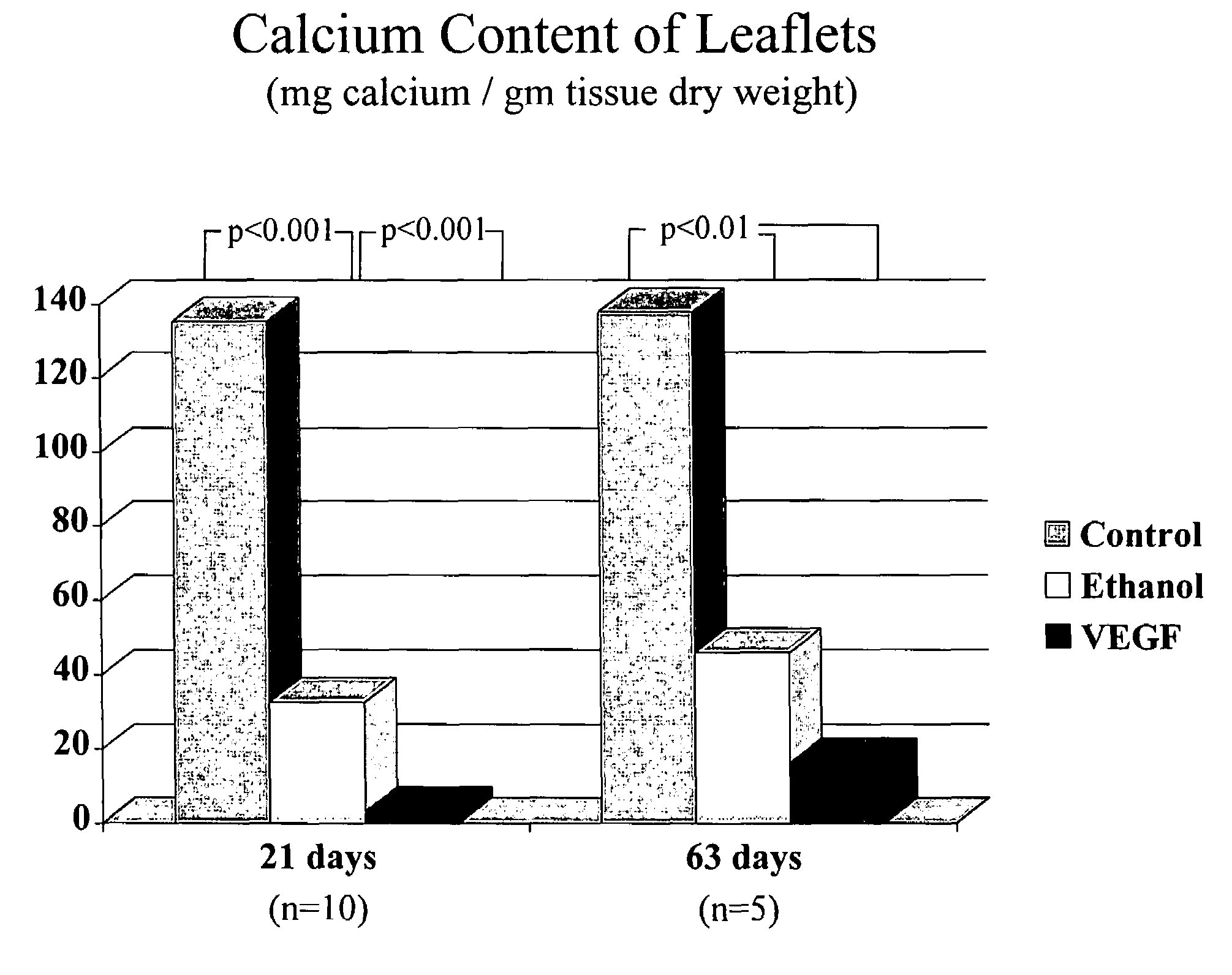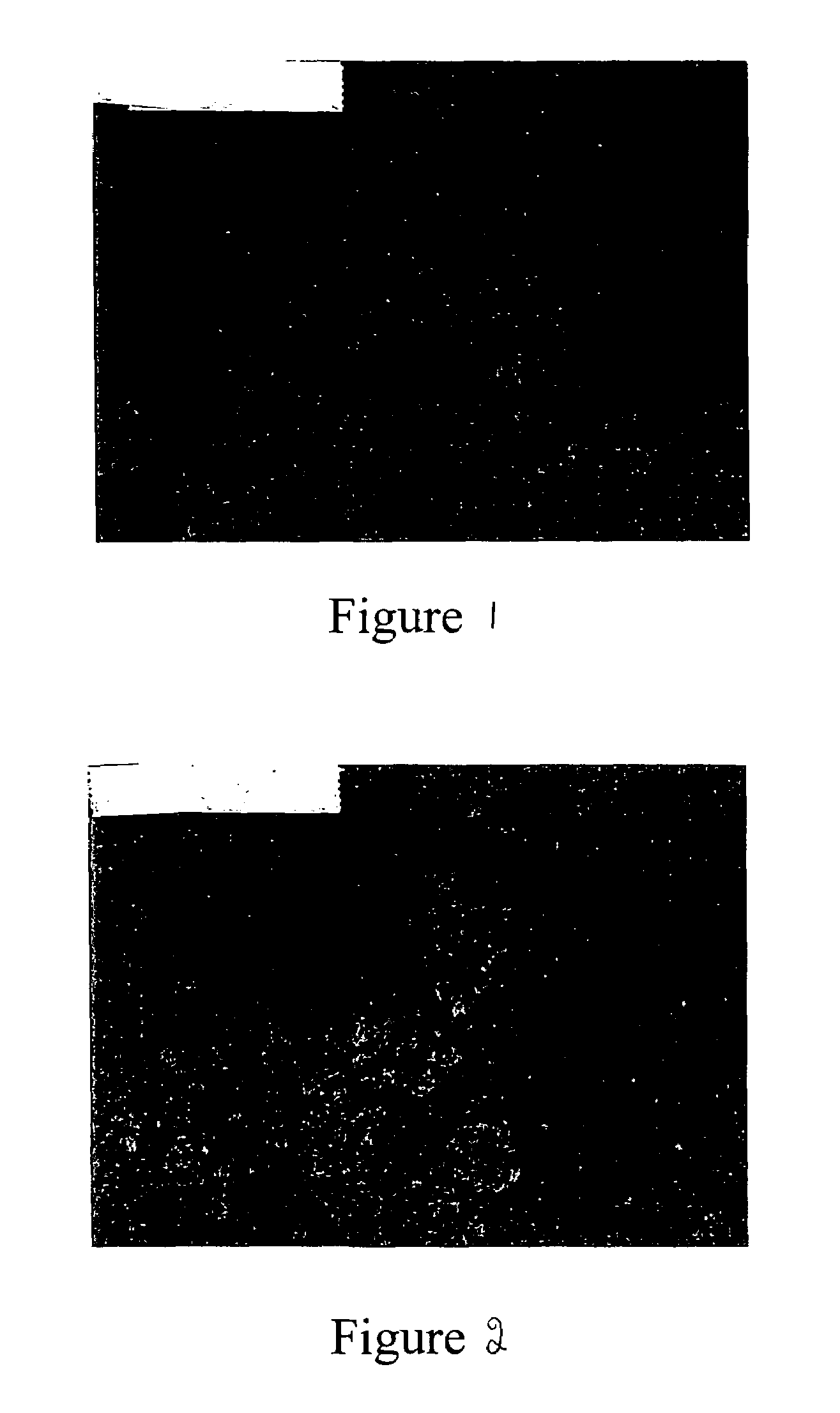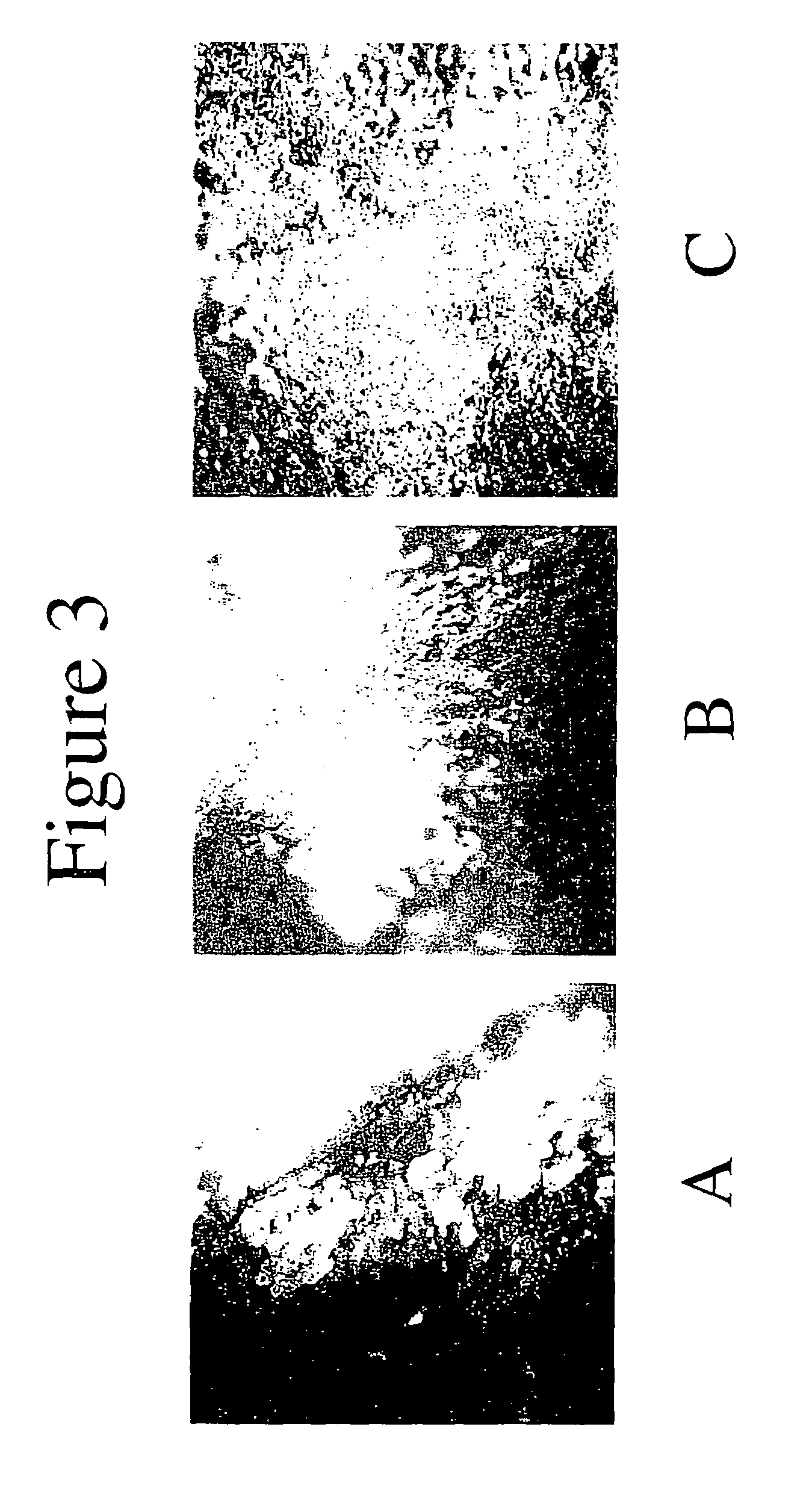Medical devices with associated growth factors
a technology of growth factor and medical device, applied in the field of prosthesis, can solve the problems of high incidence of blood clotting on or around the prosthetic valve, anticoagulant carries a risk of significant bleeding of 35% annually, and cannot be taken safely by certain individuals, and achieves the effect of stimulating the association of viable cells
- Summary
- Abstract
- Description
- Claims
- Application Information
AI Technical Summary
Benefits of technology
Problems solved by technology
Method used
Image
Examples
example 1
Direct VEGF Association
[0072]This example demonstrates the ability of VEGF to associate with crosslinked tissue and the corresponding effectiveness of VEGF to stimulate affiliation of viable endothelial cells with the tissue.
[0073]Several solutions were prepared. The glutaraldehyde solution was prepared in a 5 liter volume by the addition of 19.3 g NaCl, 70.0 g sodium citrate, 2.5 g citric acid, 50 ml of 50% by volume glutaraldehyde (Electron Spectroscopy Sciences, Fort Washington, Pa.), and sufficient reverse osmosis purified water (RO water). A VEGF solution was prepared by diluting 50 μg / ml stock solution of VEGF (human recombinant VEGF165, R&D Systems, Minneapolis, Minn.) with 5 ml of 30 mM HEPES buffered saline solution (HBSS, from Clonetics, San Diego, Calif.) for a final concentration of 100 ng / ml. A HEPES buffered saline solution was prepared by adding 17.4 g of NaCl and 35.7 g HEPES free acid to three liters of RO water. An 80% ethanol solution was prepared by combining 1.8...
example 2
Glutaraldehyde Crosslinking of VEGF to Ethanol Treated Crosslinked Tissue
[0097]This example demonstrates that a low concentration glutaraldehyde solution effectively crosslinks VEGF to ethanol treated glutaraldehyde crosslinked tissue without loss of the ability of VEGF to stimulate endothelial cell proliferation and chemotaxis.
[0098]All solutions were prepared fresh on the day of use and were filtered through a 0.25 μm filter. A HEPES buffered saline solution consisted of 0.1M NaCl and 50 mM HEPES in reverse osmosis purified water (RO water). The pH of the HEPES buffered saline solution was adjusted to 7.4. A 0.01% glutaraldehyde solution was prepared by adding 20 μl of a 50% by volume stock solution of glutaraldehyde (Electron Microscopy Sciences, Fort Washington, Pa.) to 100 ml of HEPES buffered saline. A VEGF / glutaraldehyde solution was prepared by adding 2 μg VEGF (human recombinant VEGF165, R&D Systems, Minneapolis, Minn.) to 20 ml of the 0.01% glutaraldehyde solution, resulti...
example 3
Glutaraldehyde Crosslinking of VEGF to Fresh Tissue
[0105]This example demonstrates that a low concentration (0.01%) glutaraldehyde solution can be used to attach VEGF to fresh porcine aortic leaflet tissue without loss of the ability of VEGF to stimulate endothelial cell proliferation and chemotaxis.
[0106]A HEPES buffered saline solution, a 0.01% glutaraldehyde solution and a VEGF / glutaraldehyde solution were prepared as described in Example 2. Six porcine aortic leaflets were harvested using sterile surgical technique and rinsed in 0.9% sterile saline. Two of the leaflets were incubated in 10 ml HEPES buffered saline solution. Two other leaflets were incubated in 10 ml 0.01% glutaraldehyde solution. The remaining two leaflets were incubated in 10 ml VEGF / glutaraldehyde solution. All leaflets were incubated in their respective solutions for 30 minutes. At the end of the 30 minute incubation period, the leaflets were rinsed three times in 100 ml of 0.9% sterile saline solution. Each ...
PUM
| Property | Measurement | Unit |
|---|---|---|
| molecular weight | aaaaa | aaaaa |
| molecular weight | aaaaa | aaaaa |
| of time | aaaaa | aaaaa |
Abstract
Description
Claims
Application Information
 Login to View More
Login to View More - R&D
- Intellectual Property
- Life Sciences
- Materials
- Tech Scout
- Unparalleled Data Quality
- Higher Quality Content
- 60% Fewer Hallucinations
Browse by: Latest US Patents, China's latest patents, Technical Efficacy Thesaurus, Application Domain, Technology Topic, Popular Technical Reports.
© 2025 PatSnap. All rights reserved.Legal|Privacy policy|Modern Slavery Act Transparency Statement|Sitemap|About US| Contact US: help@patsnap.com



